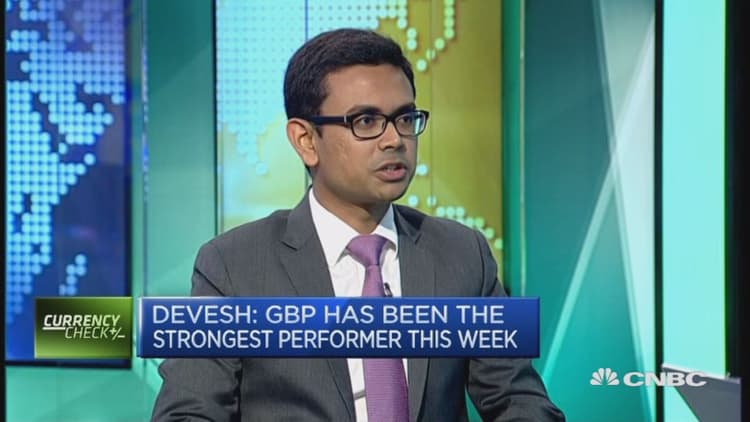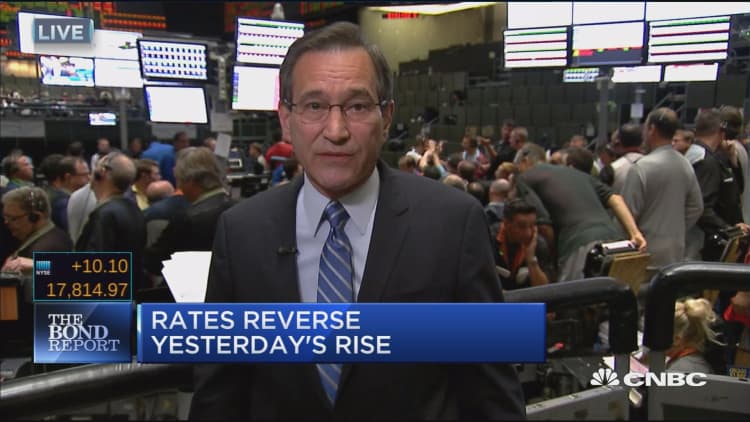The dollar was broadly weaker on Wednesday as risk appetite returned to markets, boosting higher-risk currencies, while sterling and the euro rose on the last day of campaigning before Britain's referendum on European Union membership.
The sterling hit its highest levels of the year after polls showed that 51 percent back remaining in the EU. The pound sterling was last at $1.4798, up 0.96 percent on the day.
A swing in bookmaker odds towards Britain choosing to remain in the EU, following the murder of a British lawmaker last week, helped boost currencies like the Australian and New Zealand dollars, considered riskier investments because of their ties to commodity prices.
The shift also helped sterling to recover 5 percent from lows around $1.40 last week.
"Part of it is gradually more and more the risk from Brexit being removed, something that started last week when we saw the polls changing around," said Charles St-Arnaud, senior strategist and economist at Nomura Securities International in London.

That bolstered the Australian and New Zealand dollar, St-Arnaud said, with the kiwi rising to its highest since June 11, 2015, and the Aussie touching its highest since May 3.
"Being the highest-paying currencies in the developed world, they're gaining quite a bit," St-Arnaud said.
The was last flat against its U.S. counterpart at $0.7520. The New Zealand dollar fell 0.13 percent to $0.7133. Both Australia and New Zealand currently boast higher interest rates than the United States, making them attractive to investors.
Analysts also pointed to the low volume in markets, saying most investors preferred to stay on the sidelines ahead of Thursday's referendum.

Renewed risk appetite on reduced 'Brexit' fears also helped currencies across Europe as the dollar fell against the Swiss franc, touching its lowest since May 4, and the Danish , Swedish and Norweigian crowns.
While the so-called Brexit vote continues to dominate sentiment, testimony by U.S. Federal Reserve Chair Janet Yellen on Tuesday and Wednesday was seen by some as playing down the chances of a hike in U.S. interest rates this summer.
U.S. interest rate markets price in only a 9.5 percent chance of an increase in official borrowing costs next month and just a 26 percent chance of a hike in September, according to CME Group's Fedwatch tool.
The dollar was flat against the yen at 104.8260 and was 0.17 percent lower against the basket of currencies that measures its broader strength. It fell 0.71 percent against the euro to $1.1331.
Correction: An earlier version of this story was updated to reflect that the FXCM increases will take effect on Wednesday.

